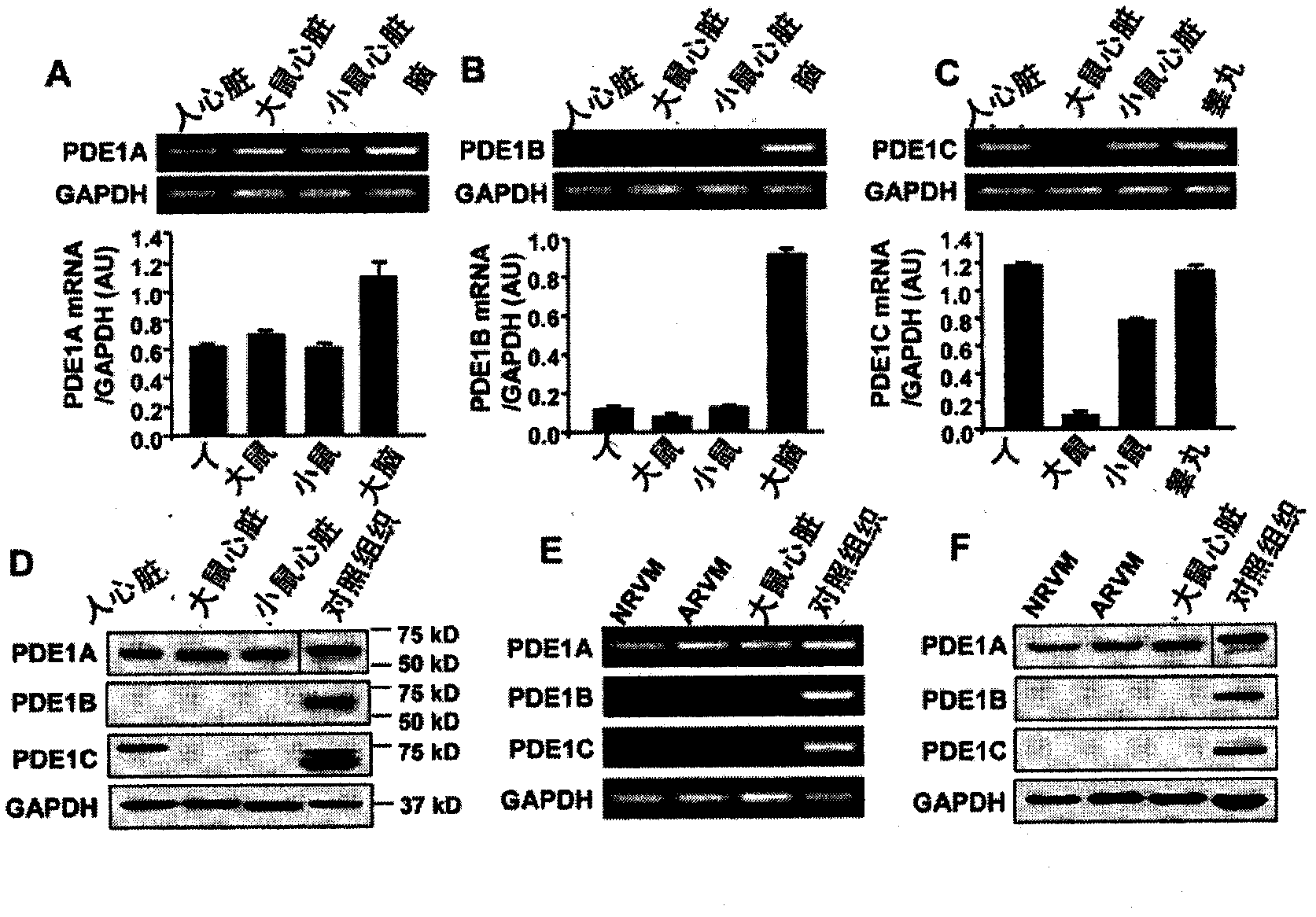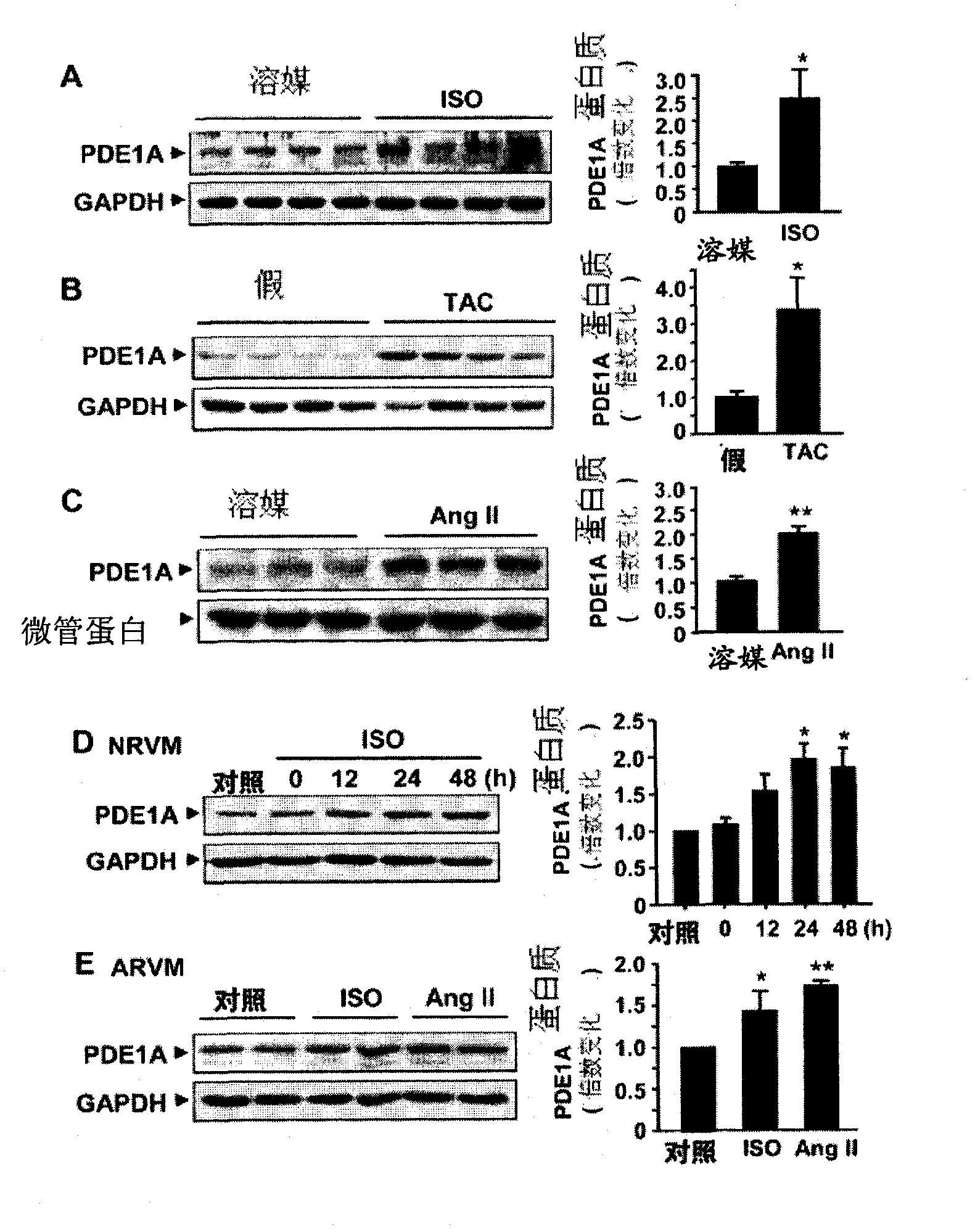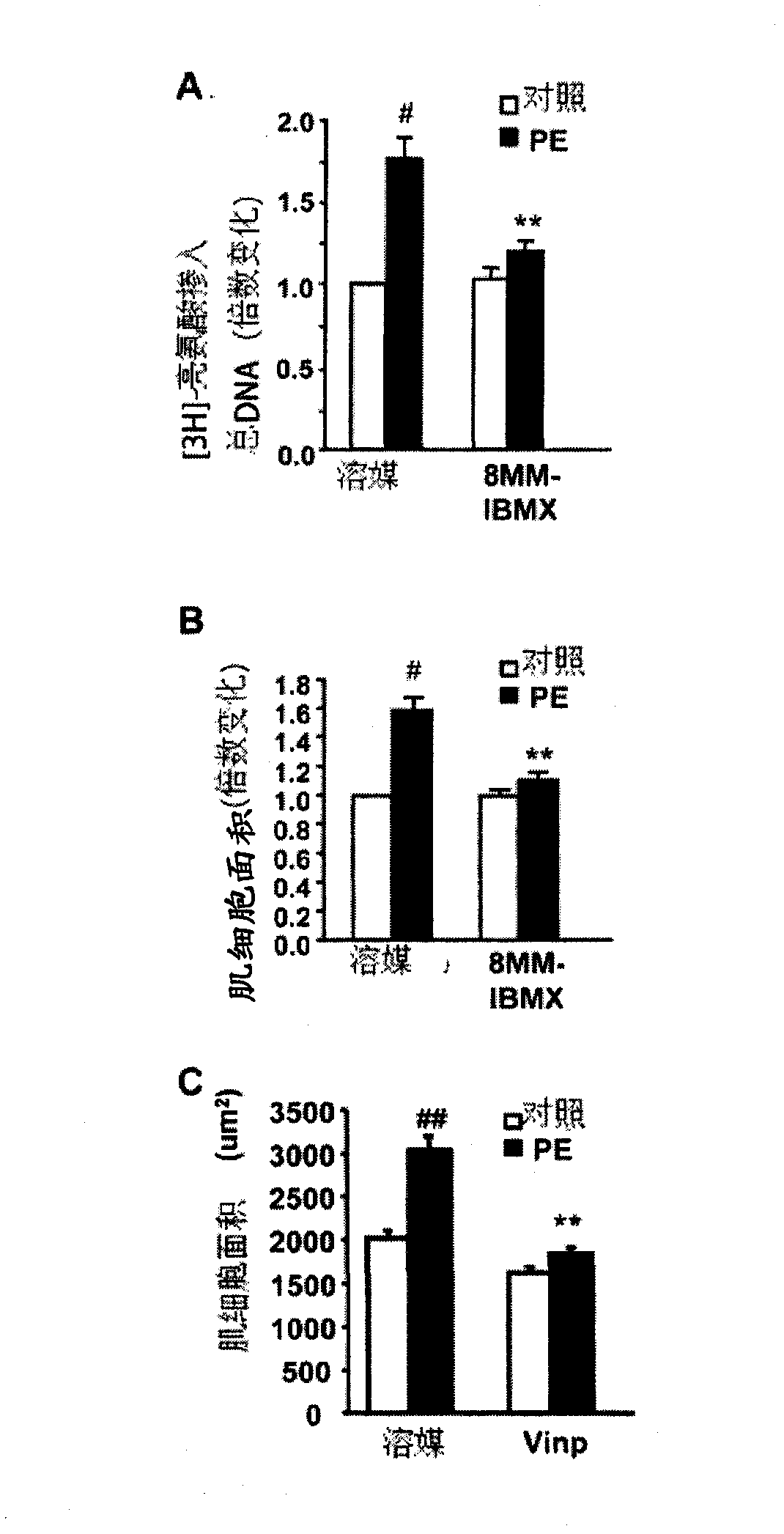Methods and compositions for the treatment or prevention of pathological cardiac remodeling and heart failure
A technology for cardiac remodeling and heart failure, applied in drug combinations, pharmaceutical formulations, organic active ingredients, etc., can solve the problems of unclear function of PDE1C, poorly documented expression and function, etc.
- Summary
- Abstract
- Description
- Claims
- Application Information
AI Technical Summary
Problems solved by technology
Method used
Image
Examples
Embodiment 1
[0100] Example 1: Determining the expression of PDE1 isoforms in heart and cardiomyocytes
[0101] In human, rat, and mouse hearts, semi-quantitative RT-PCR analysis revealed that nearly identical levels of PDE1A were detected in human, rat, and mouse hearts, whereas PDE1C was predominantly detected in human and mouse hearts , PDE1B was weakly detected in all hearts ( figure 1 A-C). Western blot analysis showed that PDE1A protein levels were similar in hearts of different species, while PDE1B was not detected in hearts, consistent with mRNA expression ( figure 1 D). However, mouse hearts yielded much lower PDE1C protein expression compared to humans, inconsistent with mRNA expression levels ( figure 1 D). The low levels of mouse cardiac PDE1C protein are unlikely to be the result of antibody insensitivity, as the antibody recognizes mouse testis strongly ( figure 1 D). Furthermore, the levels of PDE1A mRNA and protein in both NRVM and ARVM were comparable to those in adult...
Embodiment 2
[0102] Example 2: PDE1A expression is upregulated in response to hypertrophic stimulation in isolated cardiomyocytes in vivo and in vitro
[0103] Western blot analysis showed that PDE1A protein levels were significantly upregulated in the hypertrophic hearts of animals, including the hearts of mice chronically infused (30 mg / kg / d, 7 days) with isoproterenol (ISO) ( figure 2 A) Hypertrophic heart of mice induced by chronic pressure overload after 4 weeks of transverse aortic constriction (TAC) ( figure 2 B) or rat hearts with long-term Ang II infusion (0.7 mg / kg / d, 7 days) via osmotic minipumps ( figure 2 C). These models are established rodent models of cardiac hypertrophy. In isolated NRVM, ISO treatment increased the relative level of PDE1A protein ( figure 2 D). Similarly, ISO or Ang II treatment of ARVM resulted in increased PDE1A protein levels ( figure 2 E). Collectively, these data indicate that PDE1A expression in cardiomyocytes can be upregulated by hypert...
Embodiment 3
[0104] Example 3: Effect of PDE1 inhibition on hypertrophic growth of cardiomyocytes
[0105] pass 3 Protein synthesis by H-leucine incorporation ( image 3 A) or by muscle cell surface area ( image 3 B) Assessed, the PDE1 inhibitor 8-MM-IBMX (8-methoxymethyl-isobutylmethylxanthine) used at 20 μmol / L (a dose that selectively inhibits PDE1) significantly attenuated PE-induced neonatal Cardiomyocyte hypertrophy in rats. Measured by muscle cell surface area ( image 3 C), Vinpocetine (20 μM), known as a PDE1 inhibitor, also significantly reduced PE-induced myocyte hypertrophy. Neonatal rat cardiomyocytes were cultured in serum-free medium for 24 hours. Cells were pretreated with 20 μM of 8-MM-IBMX or vehicle DMSO, followed by either no treatment (control, ctrl) or treatment with PE for 48 hours. For the last 6 hours [ 3 H]-leucine-labeled pulse-chase. Cells were lysed, and the cell lysate was measured by scintillation counter 3 H-leucine incorporation. 3 Values for H...
PUM
 Login to View More
Login to View More Abstract
Description
Claims
Application Information
 Login to View More
Login to View More - R&D Engineer
- R&D Manager
- IP Professional
- Industry Leading Data Capabilities
- Powerful AI technology
- Patent DNA Extraction
Browse by: Latest US Patents, China's latest patents, Technical Efficacy Thesaurus, Application Domain, Technology Topic, Popular Technical Reports.
© 2024 PatSnap. All rights reserved.Legal|Privacy policy|Modern Slavery Act Transparency Statement|Sitemap|About US| Contact US: help@patsnap.com










